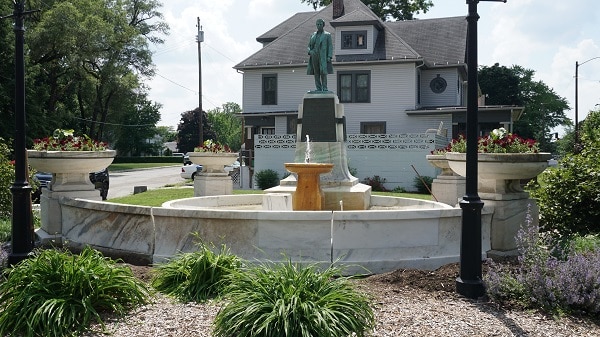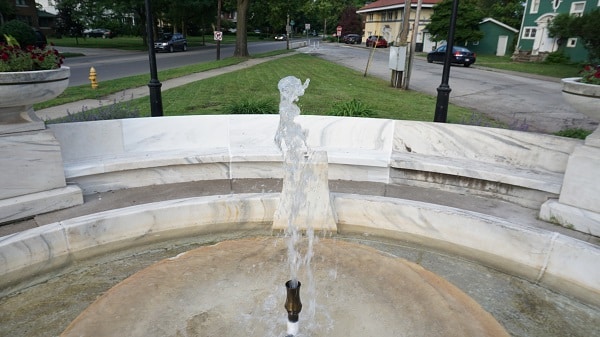Two marble benches from Indiana were brought to the McKay Lodge Conservation Laboratory campus for a marble conservation treatment. Why the benches arrived at our conservation lab facilities just outside of Cleveland, Ohio is an unusual story that begins with a police chase.
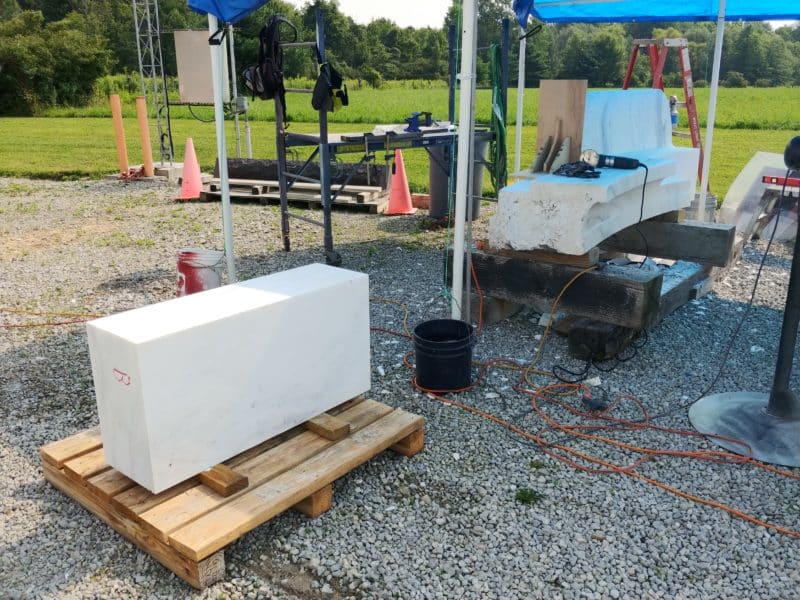
While a police chase might be exciting on the big screen, in real life it can result in serious injury and property damage. In mid April of 2017 in Elkhart, Indiana police were in pursuit of an assailant when his car veered off the road. Thankfully there was no loss of life, but the car crashed into the historic monument and fountain of Havilah Beardsley, Elkhart’s founder, built in 1913. The fountain was intact, but the marble benches surrounding the fountain were badly damaged. It was clear that the benches were in need of serious stone marble conservation after the accident.
Marcin Pikus, Conservator of Stone Sculpture and Architectural Features, assessed the marble benches in person. Pikus specializes in stone conservation. As part of his position at McKay Lodge Conservation Laboratory, Pikus regularly performs condition assessments of stone sculpture and architectural features, general maintenance and repointing of stone sculpture, removal of biological growth and soiling on stone sculpture, and when needed, recreating losses on damaged stone artworks and structures, including granite public artworks and, of course, marble restoration.
Since large sections of the marble benches were reduced to rubble, it would be a difficult task to perform the marble restoration. In fact, Pikus would have to carve entirely new sections for the marble benches in order to fully restore the original look of the fountain.
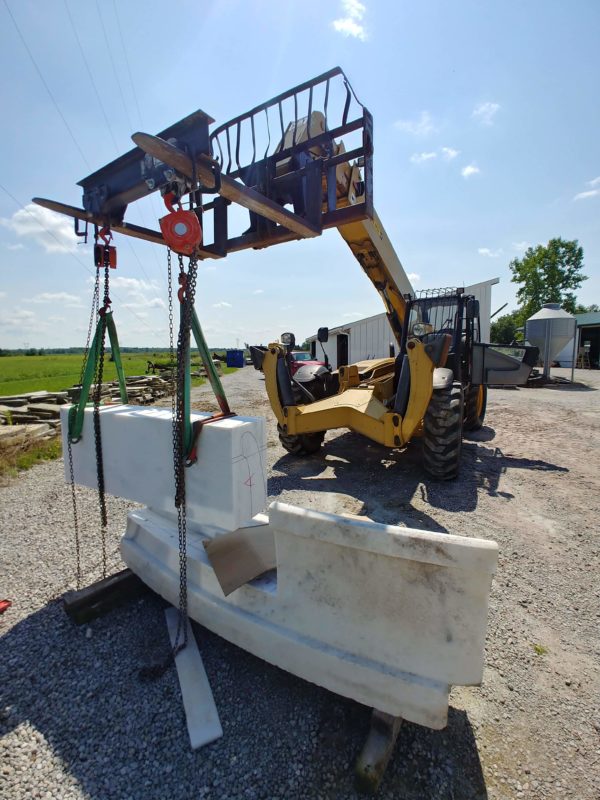
For the treatment, the damaged benches were transported to the McKay Lodge Conservation lab facilities outside of Cleveland. The marble conservation began with cleaning the surface of the benches, reducing preexisting dirt and debris from the accident and natural accumulation from the marble benches being outdoors. This process created a clean and sound surface. At the same time, Pikus sourced new blocks of marble to replace the marble that had been damaged by the accident.
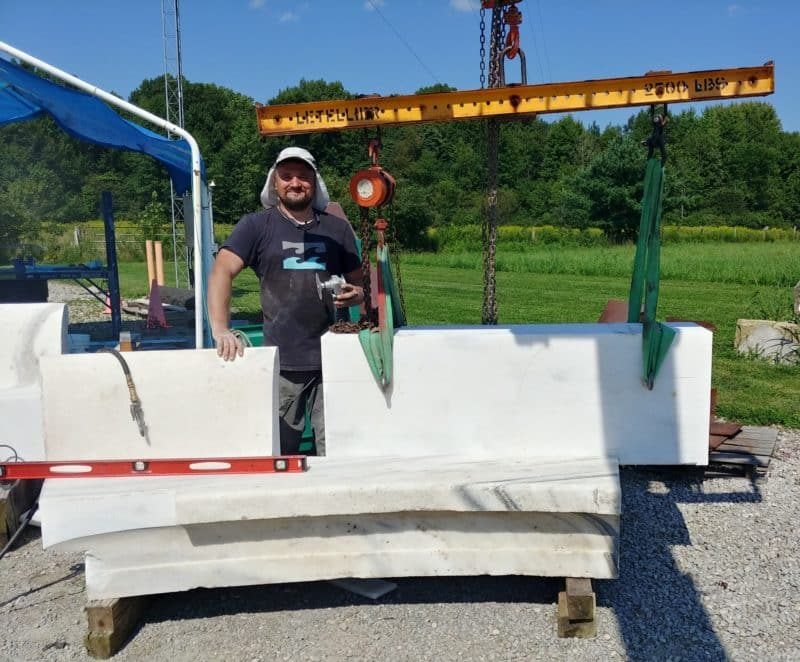
The new blocks are very heavy and required a telehandler to move them when they arrived at McKay Lodge Conservation Laboratory facilities. First, the blocks were lifted into position so that Conservator Pikus could measure for the shape and pin locations. Pinning, discussed later, is necessary to join the replacement blocks and original benches.
After performing measurements of how to join the new marble block with the old marble bench, Pikus drilled holes in the original bench which would receive respectively placed stainless steel pins inserted into the new marble.
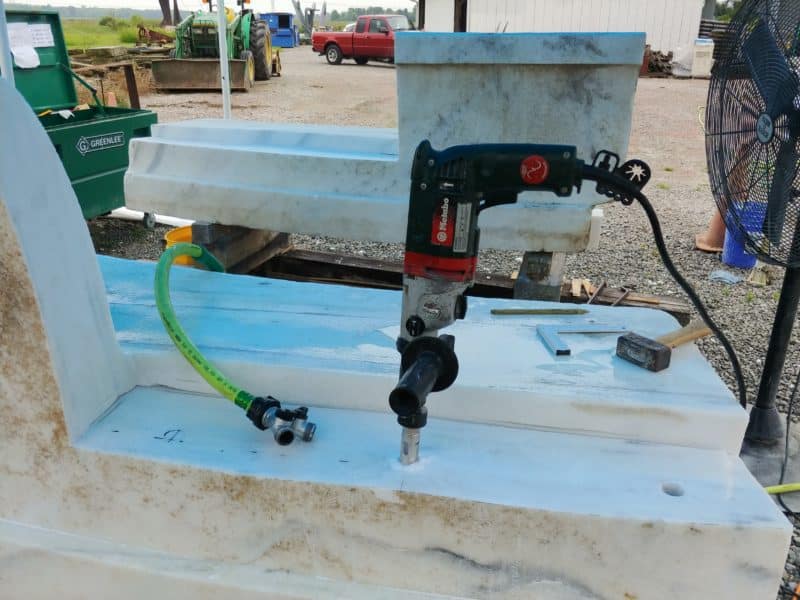
These pins had been inserted in the replacement marble and secured with epoxy. Using the telehandler to move the massive marble, the pins were carefully aligned with the bench then inserted and secured with epoxy. The result is a strong bond between the replacement marble and original marble. The surface is now ready to carve.
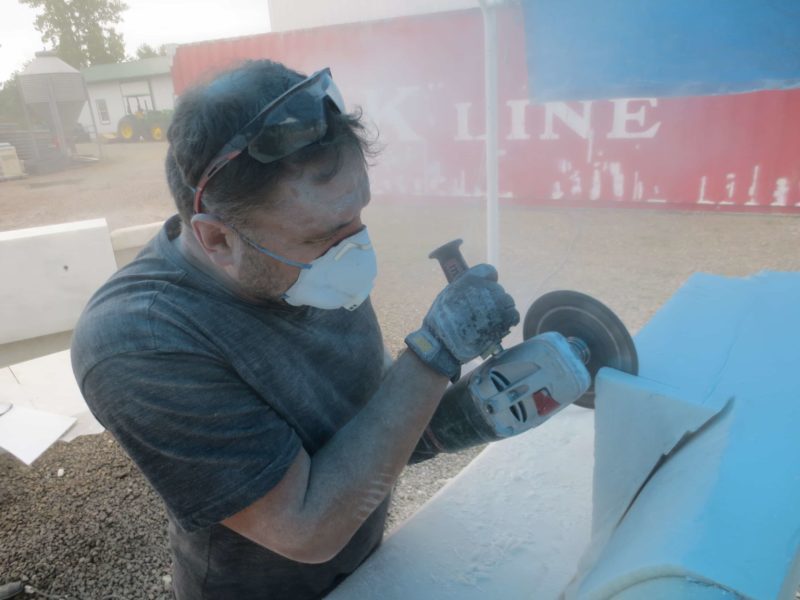
Perhaps the most nerve-racking and time-consuming portion of the marble conservation treatment is the subtractive process to shape and texture the replacement marble so that it seamlessly matches the original marble benches as much as possible.
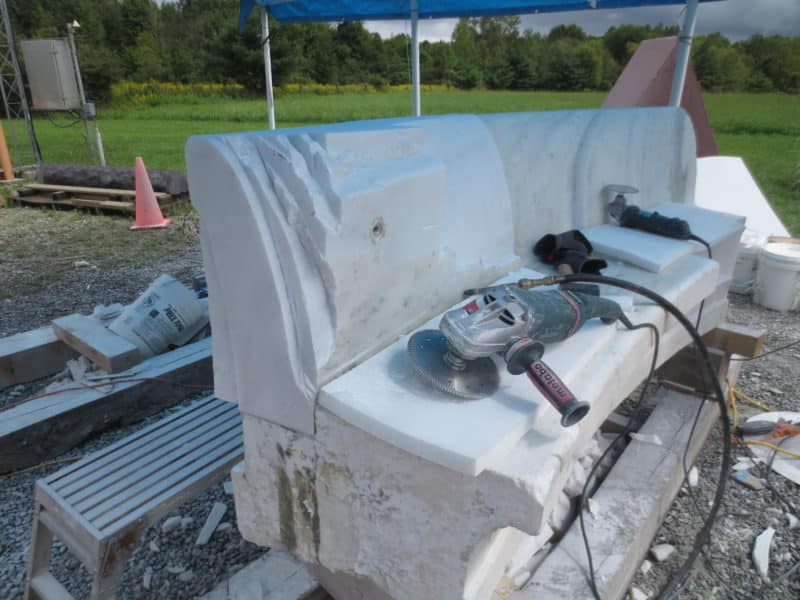
Pikus is well-versed in the carving of marble, but shaping the new marble with diamond cutting and chiseling methods simply takes time. The project began in the summer of 2018, but cooler temperatures brought the marble conservation treatment indoors for completion.
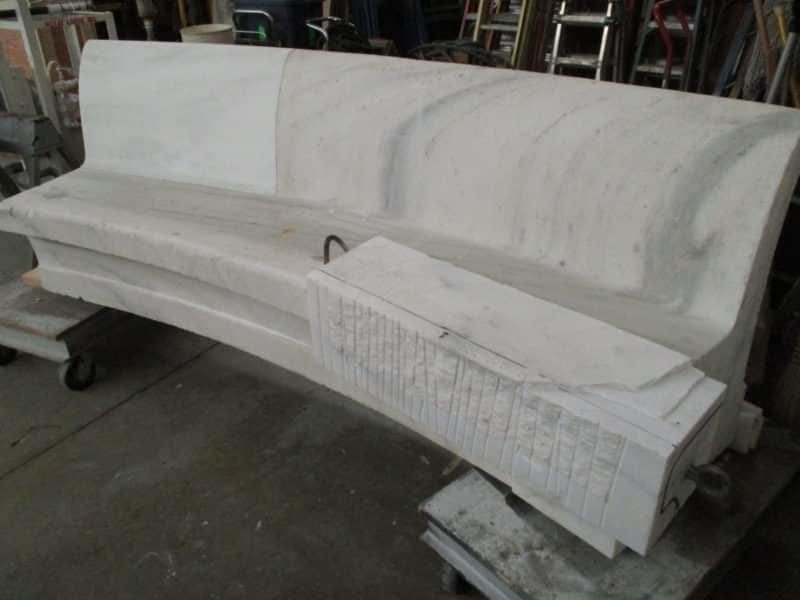
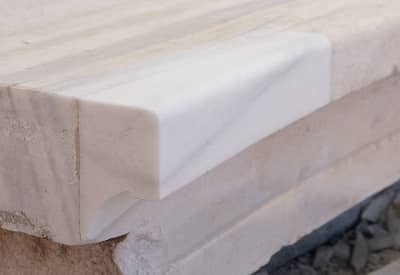
Though cleaned, the older sections of the benches still contain some dirt and micro-organisms embedded in the porous surfaces resulting in a color difference. Given enough time and exposure to the elements, the new sections will gather dirt and micro-organisms similar to the older sections. While the focus of this project was to get the benches whole again, thoroughly cleaning the older sections is being considered.
The benches were reinstalled in the summer of 2019 and once again surround the historic monument and fountain of Havilah Beardsley in the town of Elkhart, Indiana.
